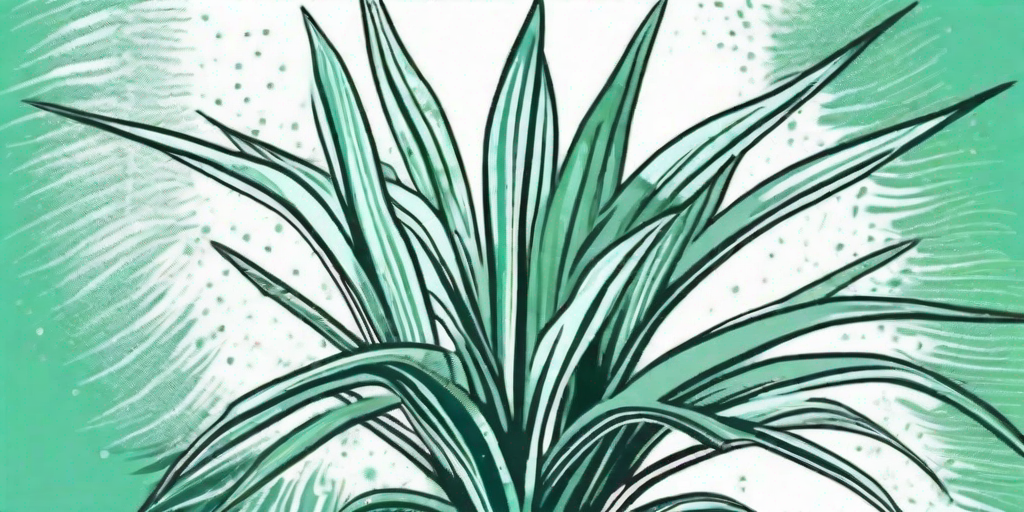
If you're a proud plant parent of a Dracaena, you know that these leafy green beauties are more than just a houseplant. They're a statement, a conversation starter, and let's be honest, they're also a bit of a diva. But don't worry, we're here to help you navigate the world of Dracaena care, specifically, the art of feeding your plant baby with the best fertilizers for lush and healthy growth.
Understanding Your Dracaena's Dietary Needs
Before we dive into the nitty-gritty of fertilizers, it's important to understand your Dracaena's dietary needs. These plants are like the supermodels of the plant world. They don't eat much, but when they do, they prefer high-quality, nutrient-rich food. In other words, your Dracaena is a bit of a foodie.
Dracaenas thrive on a balanced diet of nitrogen, phosphorus, and potassium, with a side of trace elements like magnesium and iron. They're not big fans of high salt content, so avoid fertilizers with a high mineral content. And remember, overfeeding can lead to a condition called fertilizer burn, which is as unpleasant as it sounds.
The Importance of Nitrogen
Nitrogen is like the protein shake of the plant world. It promotes strong, healthy leaf growth and gives your Dracaena that lush, green look. But remember, too much of a good thing can be harmful. Overdoing it with nitrogen can lead to leggy growth and weak stems.
The Role of Phosphorus and Potassium
Phosphorus and potassium are the unsung heroes of plant nutrition. They might not get as much attention as nitrogen, but they're just as important. Phosphorus promotes healthy root development, while potassium boosts overall plant health and disease resistance.
Choosing the Right Fertilizer
Now that you understand your Dracaena's dietary needs, it's time to choose the right fertilizer. But with so many options on the market, how do you choose? Fear not, we've got you covered.
Look for a balanced, water-soluble fertilizer with a ratio of 3:1:2 or 3:1:3 of nitrogen, phosphorus, and potassium respectively. This will provide your Dracaena with the nutrients it needs without overwhelming it. Remember, your Dracaena is a diva, not a glutton.
Organic vs. Synthetic Fertilizers
When it comes to fertilizers, you have two main choices: organic and synthetic. Organic fertilizers are made from natural materials like bone meal or compost, while synthetic fertilizers are manufactured using chemicals.
Both types have their pros and cons. Organic fertilizers are eco-friendly and provide a slow, steady release of nutrients. However, they can be more expensive and their nutrient content can vary. Synthetic fertilizers are cheaper and have a consistent nutrient content, but they can contribute to pollution and overuse can harm your plant.
Feeding Your Dracaena: A Step-by-Step Guide
Now that you've chosen your fertilizer, it's time to feed your Dracaena. But before you start, remember the golden rule of plant feeding: less is more. Overfeeding can lead to fertilizer burn, so it's better to err on the side of caution.
-
First, water your Dracaena thoroughly. This will help prevent the fertilizer from burning the roots.
-
Next, prepare your fertilizer according to the package instructions. Remember, your Dracaena prefers a light meal, so don't overdo it.
-
Apply the fertilizer to the soil, not the leaves. Your Dracaena absorbs nutrients through its roots, not its leaves.
-
Finally, water your Dracaena again to help distribute the fertilizer evenly through the soil.
Frequently Asked Questions
How often should I fertilize my Dracaena?
Dracaenas generally need to be fertilized every two weeks during the growing season (spring and summer) and once a month during the dormant season (fall and winter).
Can I use regular houseplant fertilizer for my Dracaena?
Yes, as long as it has the right balance of nutrients. Look for a 3:1:2 or 3:1:3 ratio of nitrogen, phosphorus, and potassium.
What if I over-fertilize my Dracaena?
If you over-fertilize your Dracaena, it may develop fertilizer burn. This can cause the leaves to turn yellow or brown and fall off. If this happens, flush the soil with water to remove excess fertilizer and let the plant recover before feeding it again.
Conclusion
Feeding your Dracaena might seem like a daunting task, but with a little knowledge and the right fertilizer, it's a breeze. Remember, your Dracaena is a diva, and like all divas, it thrives on attention, care, and high-quality food. So go ahead, feed your Dracaena and watch it flourish.















